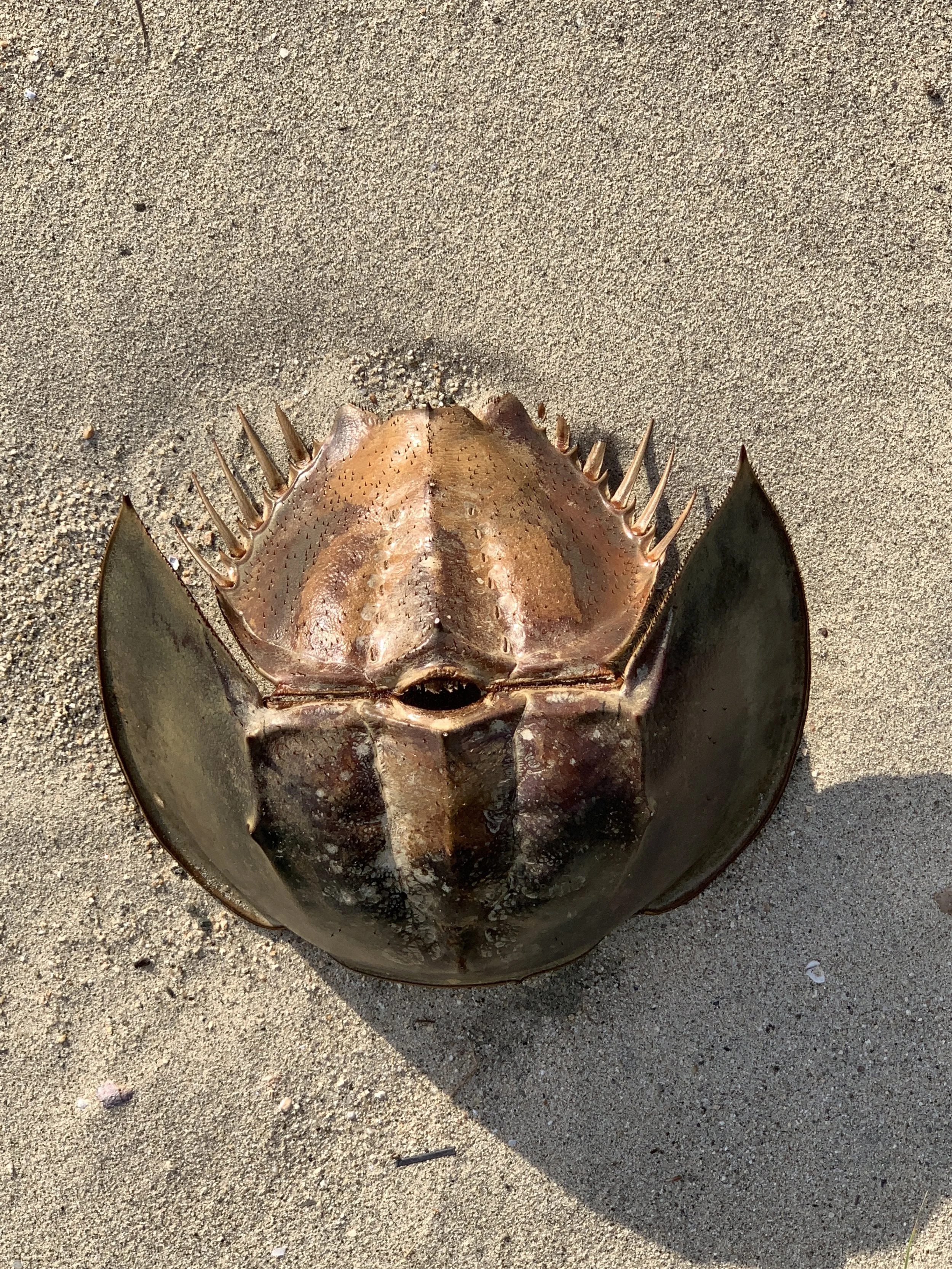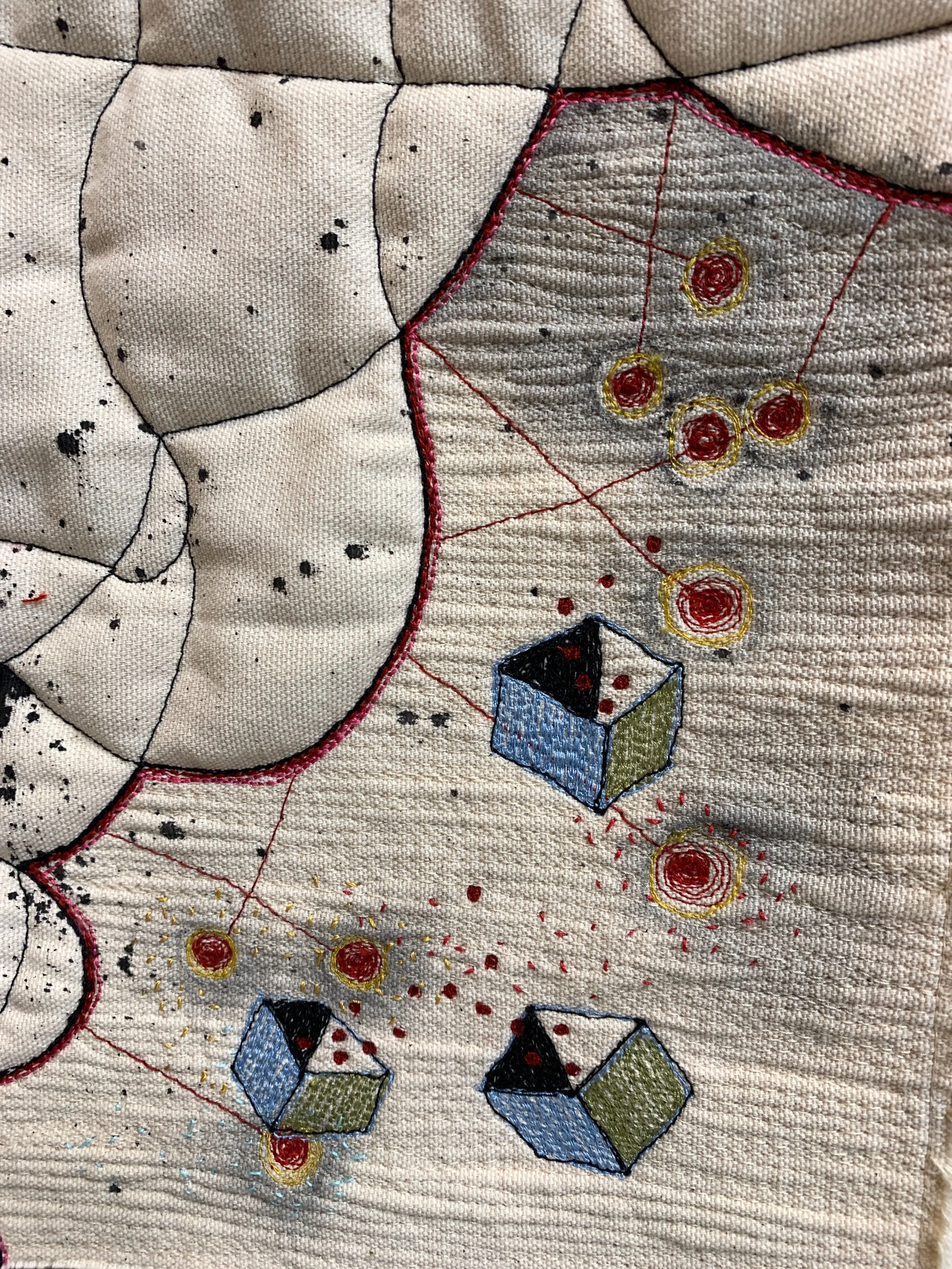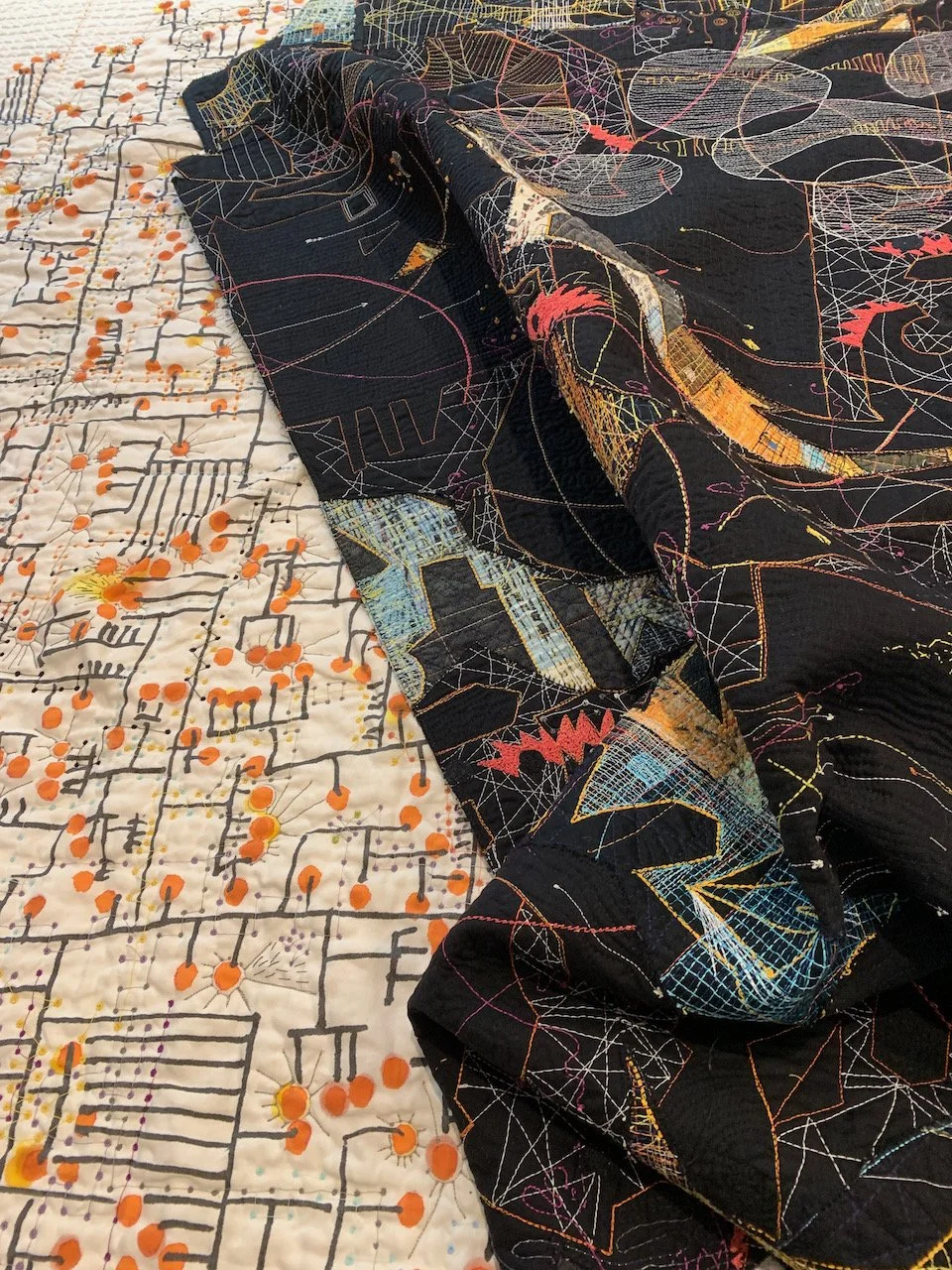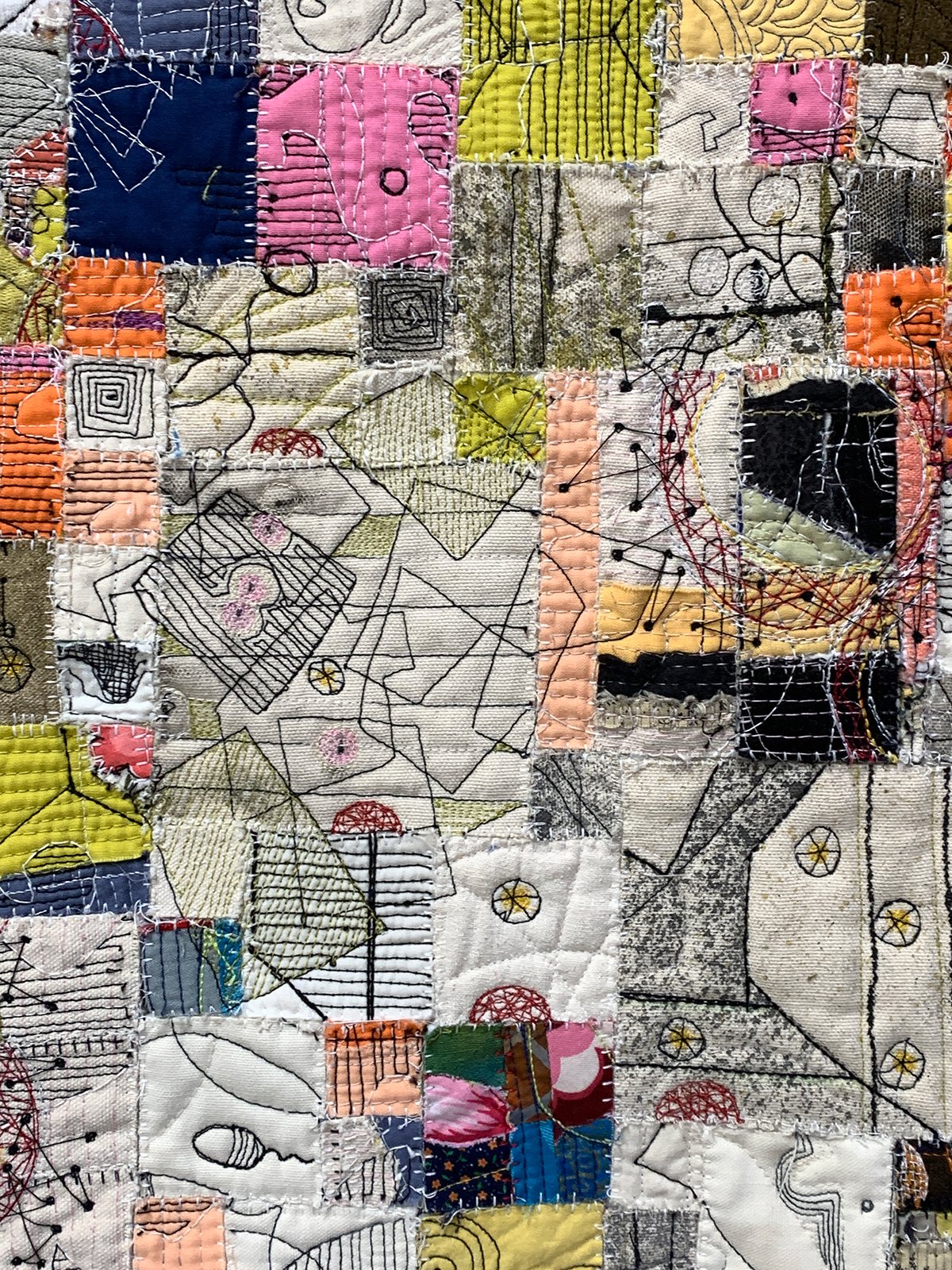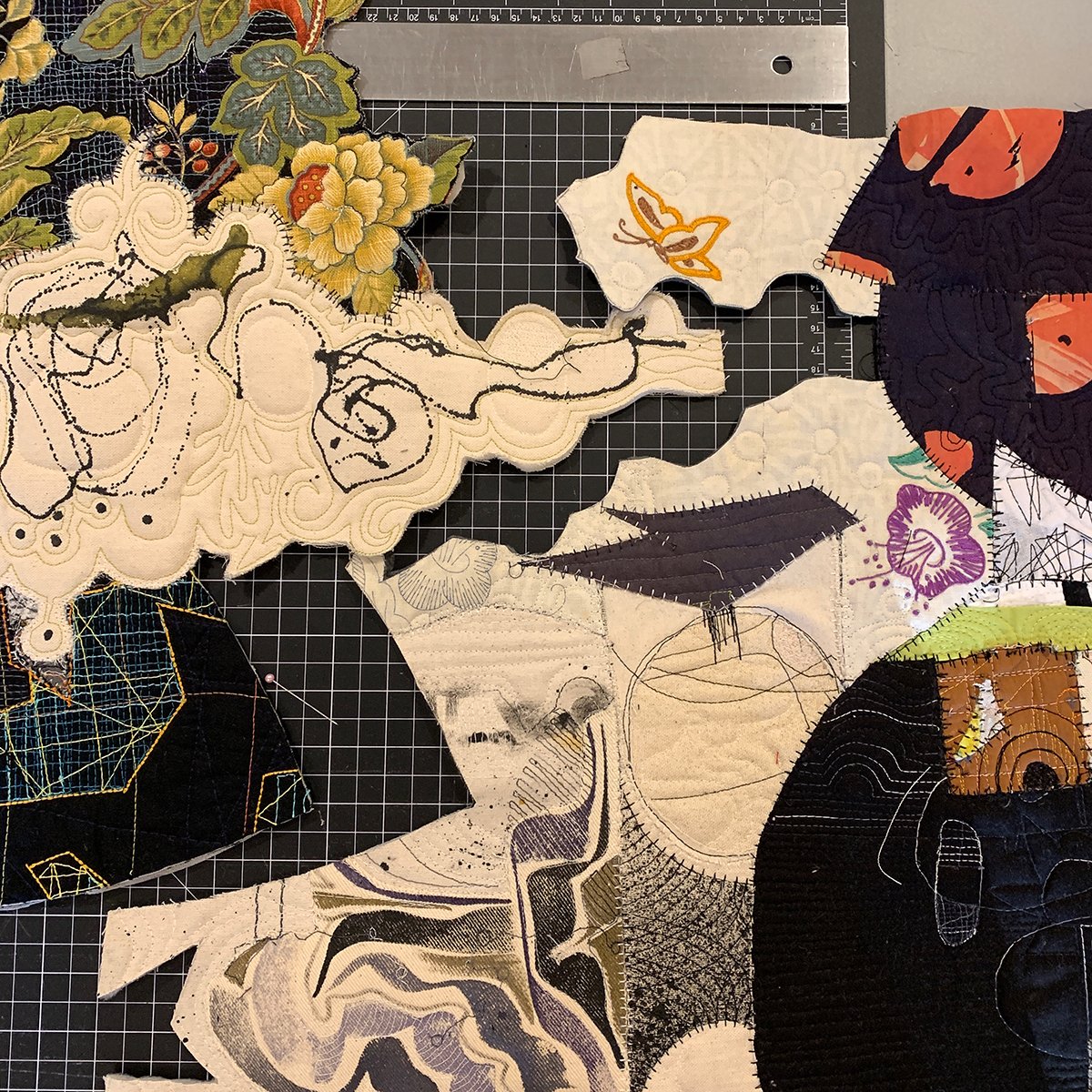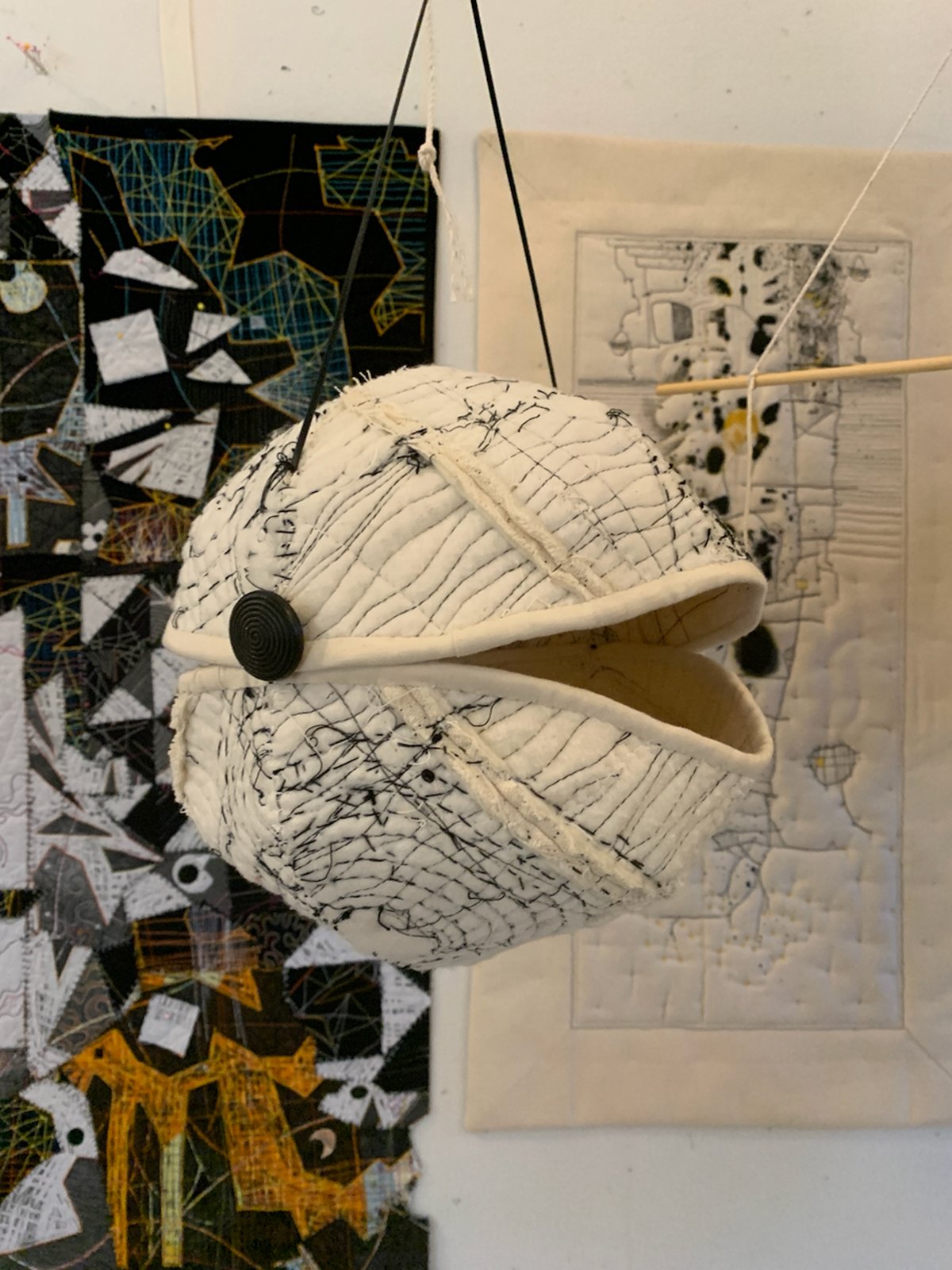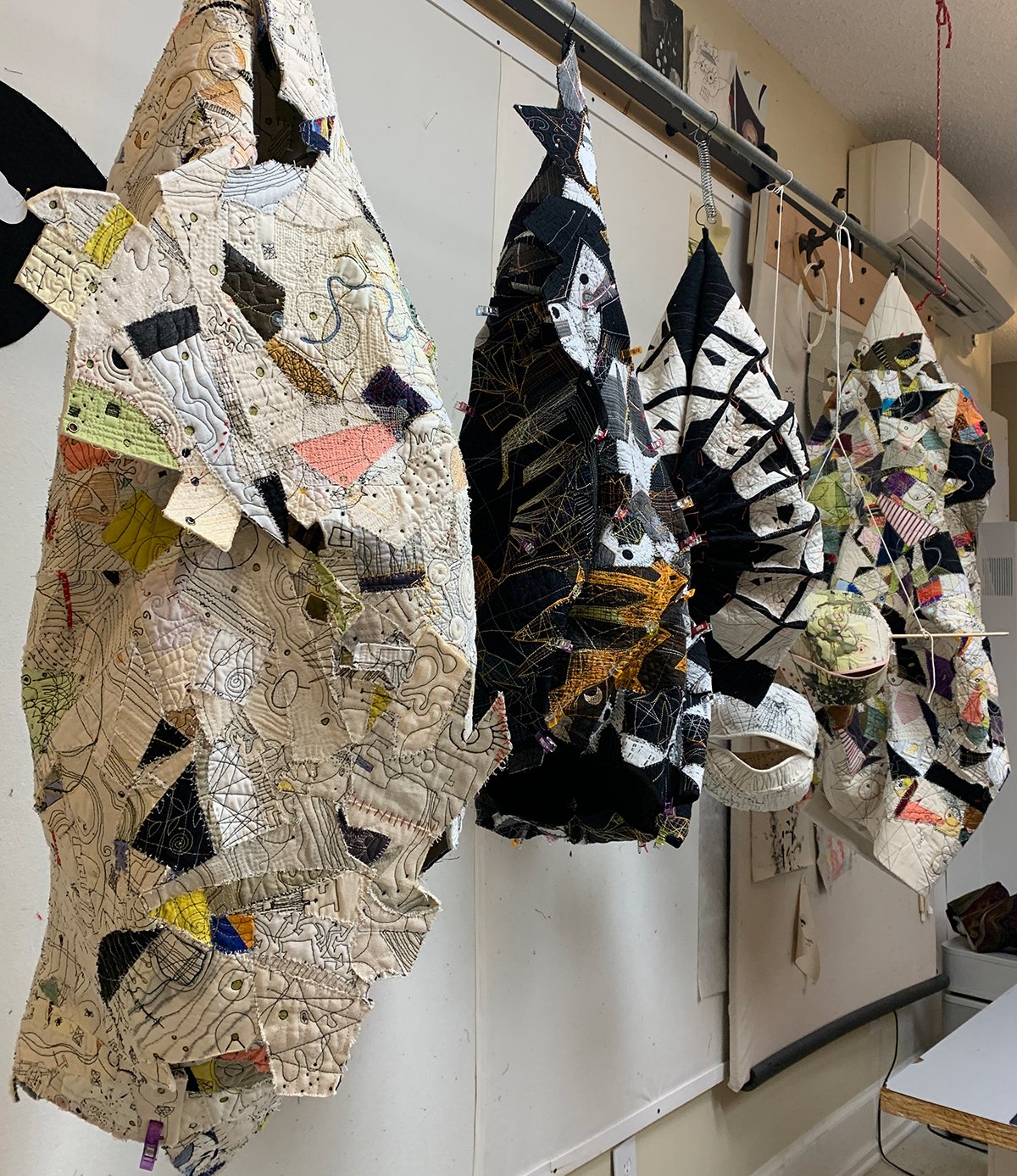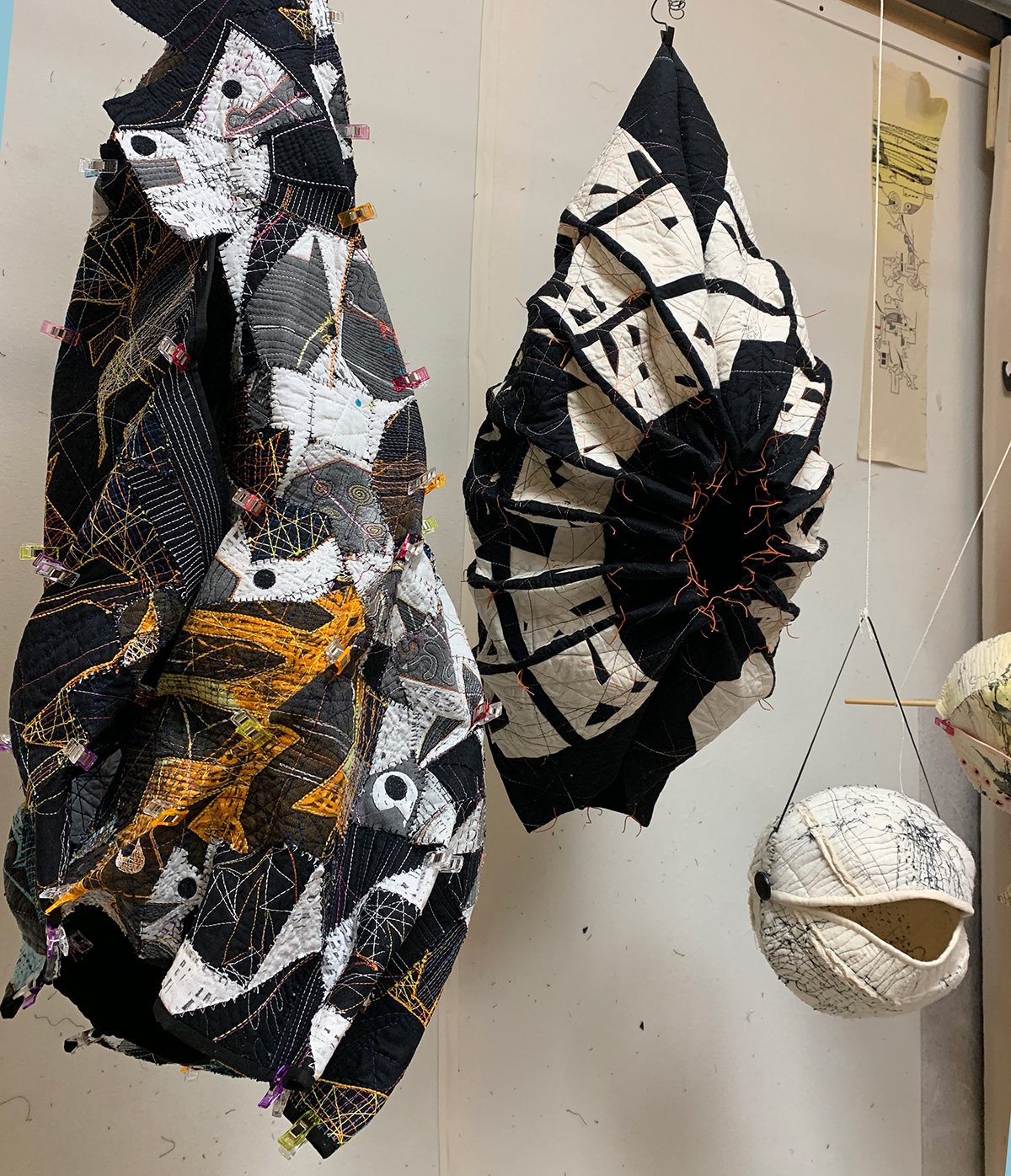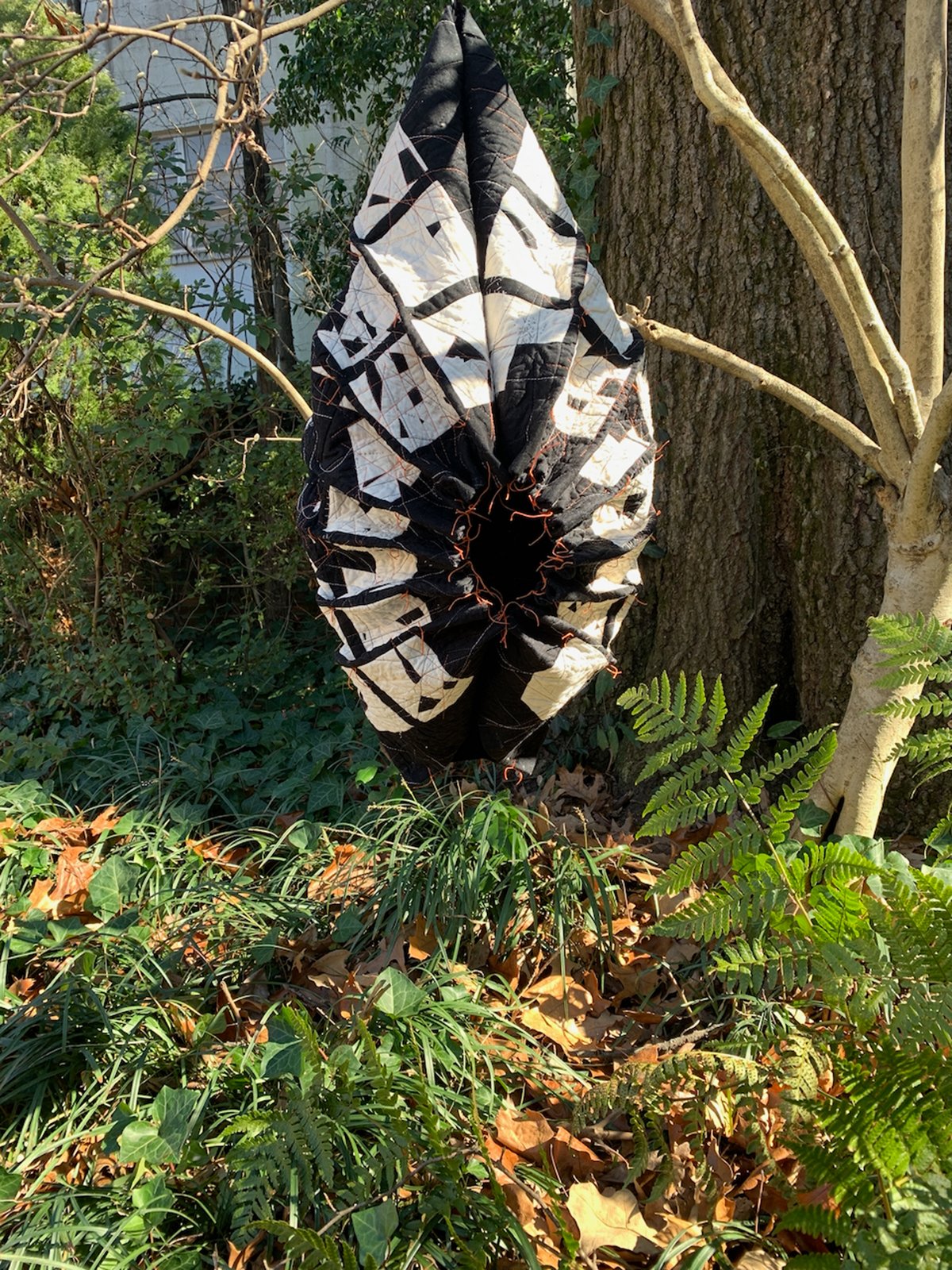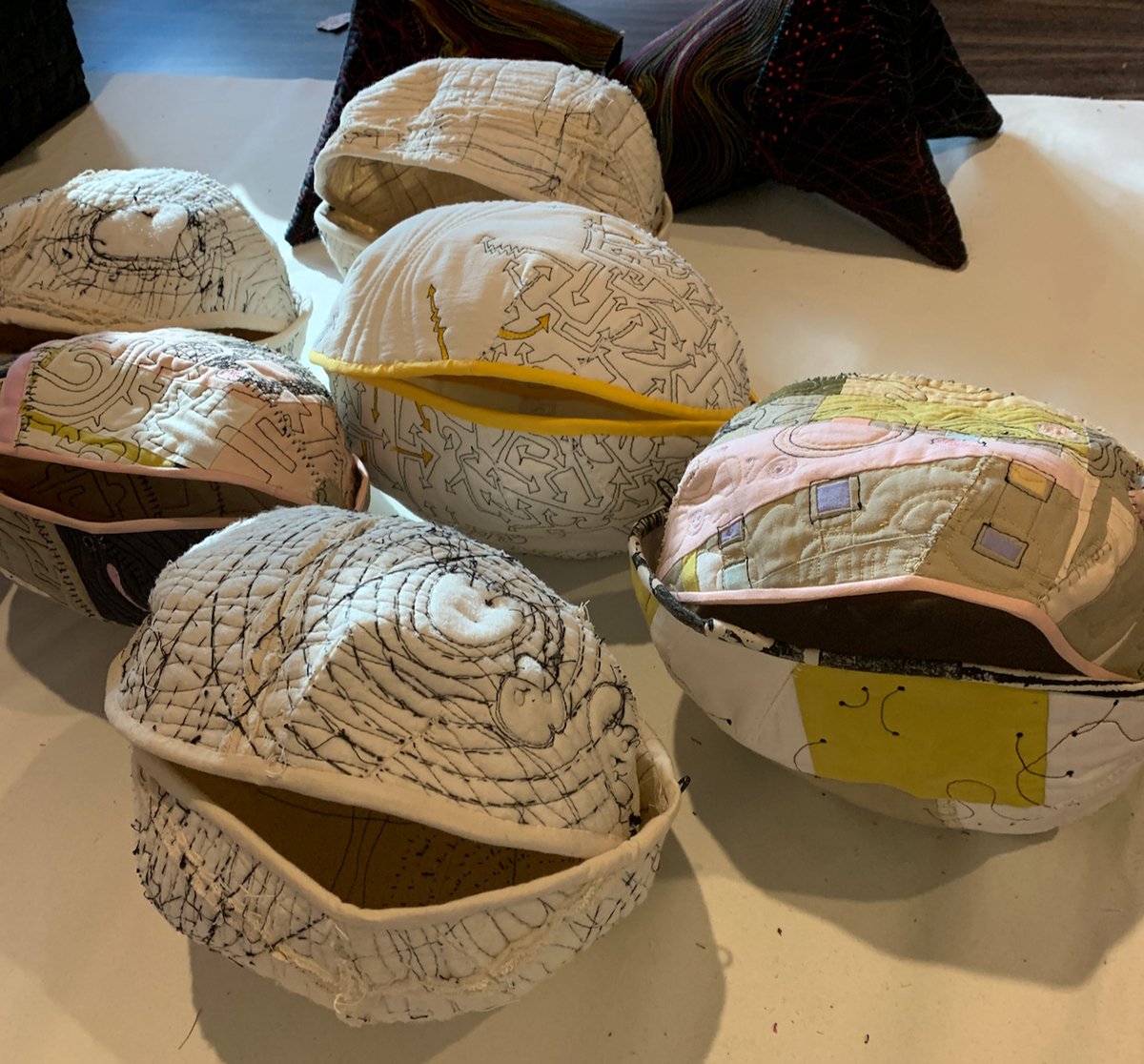Grids are elemental. They anchor, organize and subdivide space. They add order to chaos. They bring structure to cities. They show up everywhere: cages, tiling, supermarket shelves, architectural structures. So when I started this project I aimed to break the grid. I had two projects that were not successful up on my design board that I could use as raw material. Those two, added to the multitude of other scraps I have from unfinished pieces, provided a varied and textural group to work with.
I started by cutting the quilts up into 1, 2 and 4 inch squares. These were the tiles that would fit together conveniently when I butted them up against each other. I use a stitch that looks like a ladder to stitch the tiles together–raw edge to raw edge.
Each tile had its own story left over from previous incarnations. At first blush I liked the combination of the brilliant colored tiles against the neutral black and white canvas tiles. And though there is an implied grid here, it is not regular or confining. The piece could grow in every direction.
I could also use these base tiles to add even more texture and information with layered stitching. I admit I am a bit compulsive. I love traveling across a piece to find ways of joining disparate elements with stitch.
The end result satisfies my goal of interrupting a grid. There’s more to it than that though, the piece satisfies my interest in the mysteries of life—the crazy, cacophonous reality in which we live.
Grid interrupted, 57” x42”, Paula Kovarik







